The Quest of Frank Schildiner
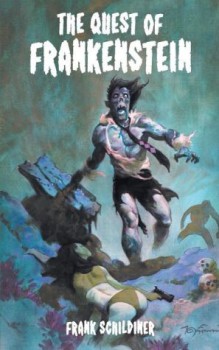
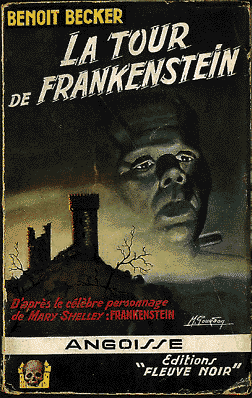 Jean-Claude Carriere is best remembered as the acclaimed screenwriter of Hotel Paradiso (1966), Belle de Jour (1967), The Discreet Charm Of The Bourgeoisie (1972), The Return Of Martin Guerre (1982), and The Unbearable Lightness of Being (1988). Less well known is the fact that he also authored (under the house name of Benoit Becker) six very bloody sequels to Mary Shelley’s classic Frankenstein; or, The Modern Prometheus (1818) in 1957 and 1958 for a French horror-specialty imprint. Carriere’s books chronicle the exploits of Gouroull, as he christened the Monster, as he moves across Europe from 1875 to 1939.
Jean-Claude Carriere is best remembered as the acclaimed screenwriter of Hotel Paradiso (1966), Belle de Jour (1967), The Discreet Charm Of The Bourgeoisie (1972), The Return Of Martin Guerre (1982), and The Unbearable Lightness of Being (1988). Less well known is the fact that he also authored (under the house name of Benoit Becker) six very bloody sequels to Mary Shelley’s classic Frankenstein; or, The Modern Prometheus (1818) in 1957 and 1958 for a French horror-specialty imprint. Carriere’s books chronicle the exploits of Gouroull, as he christened the Monster, as he moves across Europe from 1875 to 1939.
Gouroull is portrayed very much in the mold of Mary Shelley’s literary original. He is a terrifying amoral creation possessed of superhuman strength and cunning. Truly the only one of his kind, he is a creation who has outlived his creator and knows not love or restraint. Gouroull is the ultimate sociopath. This Frankenstein monster is quite foreign to our pop cultural mindset. Gouroull uses his razor sharp teeth to slash his victims’ throats. He does not breathe. His skin is naturally flame-resistant. Ichor runs in his veins in place of blood. He is a monster like no other.
A decade after Carriere, Donald F. Glut authored his own series of six literary sequels to Mary Shelley’s original. His portrayal of the legendary Monster was somewhat similar, but Glut chose to set his books in the present day. These titles are being reprinted by Pulp 2.0 Press in two trade paperback omnibus editions as The New Adventures of Frankenstein.
Sadly, there are no English language editions of the French Frankenstein series at present. However, Black Coat Press recently published The Quest of Frankenstein, a new exploit of Gouroull, the first in 58 years and the first ever in English. Author Frank Schildiner made the book his personal quest not only to bring Carriere’s unique iteration of the monster back to life, but to place him squarely in the midst of the genre that helped shape Schildiner from childhood to pulp writer over the past five decades.
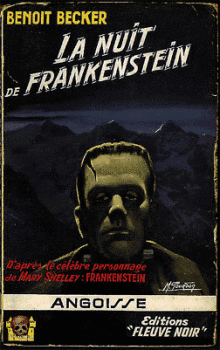
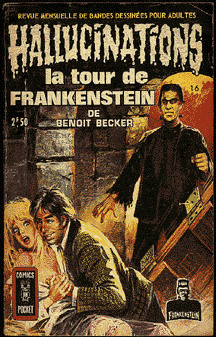 From the second one glimpses the cover artwork which recalls Frank Frazetta and Boris Vallejo’s cover art for Ace Books in the 1960s and 1970s, the tone has been set for this latest Black Coat Press title. The back cover blurb promises us a World War I setting involving H. P. Lovecraft’s Herbert West (a character who probably owes more to Stuart Gordon’s Re-Animator films than his literary progenitor at this point). That description barely scratches the surface of Schildiner’s mad affair.
From the second one glimpses the cover artwork which recalls Frank Frazetta and Boris Vallejo’s cover art for Ace Books in the 1960s and 1970s, the tone has been set for this latest Black Coat Press title. The back cover blurb promises us a World War I setting involving H. P. Lovecraft’s Herbert West (a character who probably owes more to Stuart Gordon’s Re-Animator films than his literary progenitor at this point). That description barely scratches the surface of Schildiner’s mad affair.
Throughout the series, Gouroull’s one overriding desire was to have a mate. This is consistent with Mary Shelley’s original. Schildiner uses this desire for companionship as the set-up for a quest that takes the Monster all over the globe on a scavenger hunt for various occult artifacts West is seeking as part of this latest bargain for the Monster’s mate.
Any story of a quest is, by nature, episodic. The difference is that the episodes here take Gouroull into the worlds of various other horror characters, mostly familiar from American or British film and television.
Along the way Dr. Pretorious from The Bride of Frankenstein (1935) gets ret-conned into Mary Shelley’s fictional timeline; the Creeper from Universal’s The Pearl of Death (1944), House of Horrors and The Brute Man (both 1946) turns up unexpectedly; various Lovecraft characters (including Elder Gods) either turn up or are name-checked; and a vampire congress features that rivals Donald F. Glut’s vampire legion from The Occult Files of Doctor Spektor (1972-1977) which likewise included Count Dracula, Lord Ruthven, Varney the Vampire, the Karnstein family [from Sheridan Le Fanu’s Carmilla (1872), but likely more familiar from Hammer Films’ The Vampire Lovers (1970), Lust for a Vampire and Twins of Evil (both 1971), Vampire Circus and Captain Kronos, Vampire Hunter (both 1972)].
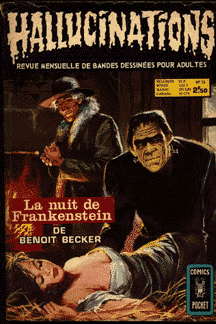
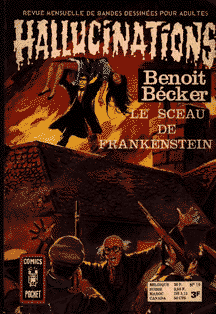 While H. G. Wells created Dr. Moreau and Richard Connell created General Zaroff in 1896 and 1924, respectively; it is likely that Schildiner is channeling the characters predominantly from Paramount’s Island of Lost Souls and RKO’s The Most Dangerous Game (both 1932); there were additional Hammer Horror and even Robert E. Howard and Dark Shadows references as well as more obscure Euro-horror and modern horror references that were only slightly familiar to me. Schildiner provides a comprehensive Afterword citing each by appearance.
While H. G. Wells created Dr. Moreau and Richard Connell created General Zaroff in 1896 and 1924, respectively; it is likely that Schildiner is channeling the characters predominantly from Paramount’s Island of Lost Souls and RKO’s The Most Dangerous Game (both 1932); there were additional Hammer Horror and even Robert E. Howard and Dark Shadows references as well as more obscure Euro-horror and modern horror references that were only slightly familiar to me. Schildiner provides a comprehensive Afterword citing each by appearance.
The real question becomes does the author succeed in this very personal quest? The answer is a resounding yes. Frank Schildiner has given Gouroull his first novel-length English language appearance and doubtless paved the way for a demand for the originals to be translated (hopefully by Black Coat Press).
More importantly, Schildiner has taken the horror films of the 1930s through the present and woven a very personal tapestry where their characters interact with one another as memories and waking nightmares. Far more than a faddish shared universe conceit, Frank Schildiner’s The Quest of Frankenstein champions European horror from its 19th Century literary roots to its 20th Century celluloid nightmares to its 21st Century self-referential celebration as New Pulp. I look forward to what is next from Mr. Schildiner.
William Patrick Maynard was licensed by the Sax Rohmer Literary Estate to continue the Fu Manchu thrillers beginning with The Terror of Fu Manchu (2009; Black Coat Press) and The Destiny of Fu Manchu (2012; Black Coat Press). The Triumph of Fu Manchu is coming soon from Black Coat Press.